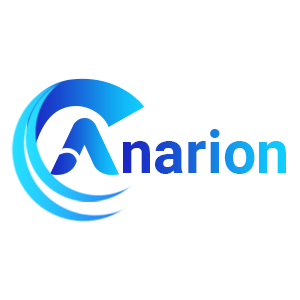Gimp VM by Anarion Technologies
GIMP (GNU Image Manipulation Program) is a versatile and powerful free, open-source raster graphics editor widely used for tasks such as photo retouching, image composition, graphic design, and digital art creation. As an alternative to proprietary software like Adobe Photoshop, GIMP offers a robust suite of tools that enable users to perform intricate image editing tasks with precision. It is especially popular for photo manipulation, allowing users to easily enhance images, remove imperfections, or creatively alter them with advanced features such as cloning, healing, and color correction. GIMP’s layer-based editing system provides a non-destructive workflow, making it ideal for complex projects where multiple elements need to be adjusted independently.
One of the standout features of GIMP is its highly customizable interface, which lets users arrange toolbars, docks, and menus to create a personalized workspace that suits their individual needs and preferences. Additionally, GIMP supports a wide range of image formats, including JPEG, PNG, TIFF, and its native XCF format, offering great flexibility when working with different types of media. The software’s extensibility is another significant advantage, as it supports a wide variety of plugins that can be installed to add extra functionality, such as custom brushes, filters, and special effects, further enhancing the editing experience.
Beyond photo editing, GIMP is widely used in graphic design for creating logos, web graphics, banners, and other digital assets, making it an essential tool for designers and content creators. It also serves as an excellent tool for digital artists who use it to create original illustrations, digital paintings, and artwork thanks to its powerful brush engine and customizable drawing tools. Furthermore, GIMP excels in image conversion and optimization tasks, making it a useful tool for preparing images for websites, social media, or print.
To subscribe to this product from Azure Marketplace and initiate an instance using the Azure compute service, follow these steps:
1. Navigate to Azure Marketplace and subscribe to the desired product.
2. Search for “virtual machines” and select “Virtual machines” under Services.
3. Click on “Add” in the Virtual machines page, which will lead you to the Create a virtual machine page.
4. In the Basics tab:
- Ensure the correct subscription is chosen under Project details.
- Opt for creating a new resource group by selecting “Create new resource group” and name it as “myResourceGroup.”
5. Under Instance details:
- Enter “myVM” as the Virtual machine name.
- Choose “East US” as the Region.
- Select “Ubuntu 18.04 LTS” as the Image.
- Leave other settings as default.
6. For Administrator account:
- Pick “SSH public key.”
- Provide your user name and paste your public key, ensuring no leading or trailing white spaces.
7. Under Inbound port rules > Public inbound ports:
- Choose “Allow selected ports.”
- Select “SSH (22)” and “HTTP (80)” from the drop-down.
8. Keep the remaining settings at their defaults and click on “Review + create” at the bottom of the page.
9. The “Create a virtual machine” page will display the details of the VM you’re about to create. Once ready, click on “Create.”
10. The deployment process will take a few minutes. Once it’s finished, proceed to the next section.
To connect to the virtual machine:
1. Access the overview page of your VM and click on “Connect.”
2. On the “Connect to virtual machine” page:
- Keep the default options for connecting via IP address over port 22.
- A connection command for logging in will be displayed. Click the button to copy the command. Here’s an example of what the SSH connection command looks like:
“`
ssh [email protected]
“`
3. Using the same bash shell that you used to generate your SSH key pair, you can either reopen the Cloud Shell by selecting >_ again
or going to https://shell.azure.com/bash.
4. Paste the SSH connection command into the shell to initiate an SSH session.
Usage/Deployment Instructions
Anarion Technologies – Gimp
Note: Search product on Azure marketplace and click on “Get it now”
Click on Continue
Click on Create
Creating a Virtual Machine, enter or select appropriate values for zone, machine type, resource group and so on as per your choice.
After Process of Create Virtual Machine. You have got an Option Go to Resource Group
Click Go to Resource Group and copy.
SSH into Terminal and Run these Commands:
$ sudo su
$ sudo apt update
$ cd ../..
$ gimp –version
Then,
$ gimp -i -b ‘
This script:
- Creates a 100×100 RGB image.
- Adds a background layer.
- Saves the image as
output.pngin the current directory. - Cleans up resources and exits GIMP.
ThankYou!!
All your queries are important to us. Please feel free to connect.
24X7 support provided for all the customers.
We are happy to help you.
Contact Number: +1 (415) 800-4585
Support E-mail: [email protected]


